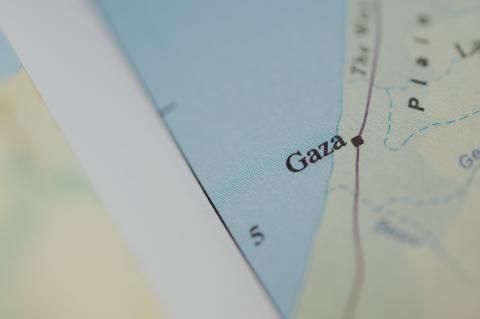A leading article in the New York Times on 14 October (The Secret Casualties of Iraq's Abandoned Chemical Weapons, by CJ Chivers) details how, on numerous occasions during the US occupation of Iraq between 2004 and 2011, American soldiers encountered Iraqi chemical weapons. The article claims that, according to secret intelligence documents obtained by the Times under Freedom of Information requests, 5000 such weapons were uncovered.
At least 17 US servicemen were injured by these weapons, but because of apparent denial or disbelief by authorities, their injuries were not properly treated and in many cases there was not even official recognition that they had occurred.

A Danish soldier inspecting a mortar shell containing blister gas, Basra, Iraq, 2004.
The reason for this secrecy is not clear, although there are several possible explanations.
Perhaps the US Government feared that publicity would encourage insurgents to seek out stockpiles to use against American forces. Indeed, a chemical artillery shell was incorporated into an improvised explosive device and detonated against US forces in Iraq in 2004. However, it seems likely that in this case the perpetrators had not in fact recognised that the shell contained chemicals rather than high explosives.
It is also possible that after the CIA published its report in September 2004 concluding that there were no weapons of mass destruction to justify the 2003 Iraq War, the US Administration was embarrassed that chemical weapons were turning up. Suppressing reporting on findings, albeit of small chemical stockpiles or injuries to US soldiers and in one case Iraqi policemen, was therefore expedient. But of course this provides no consolation to the injured soldiers or adequate recognition of their sacrifice.
The question the New York Times article does not adequately address is why such weapons were uncovered during the US occupation of Iraq. Had Saddam been hiding stockpiles of chemical weapons from UN weapons inspectors? No doubt some will see these discoveries as justification for the Bush Administration, and its allies, including Australia, in initiating the 2003 Iraq War. [fold]
But a close examination of the evidence does not support this view. The chemical weapons found after the invasion of Iraq were old and highly degraded. They had in fact been made for use in the Iran-Iraq War, and had been lost or misplaced during that conflict.
To understand how 5000 or more chemical weapons could be so 'misplaced', it is necessary to understand the nature of the Iran-Iraq War and the role chemical weapons played in it. Iraq had initiated that conflict as a quick grab of territory, but the war soon turned against Iraq and evolved into a type of trench warfare. It was punctuated by human wave attacks by Iranian soldiers that threatened to overwhelm Iraqi defences. In response, and in great secrecy, Iraq initiated a chemical weapons program centred on a complex at Al Muthanna, about 100km north west of Baghdad.
At Muthanna beginning in 1983, tens of thousands of chemical rockets, bombs and artillery shells were made each year. Over 100,000 were eventually used against Iran. The practice was to deploy these weapons to the front before each offensive, and then afterwards any unused chemical munitions were to be returned to Al Muthanna. In effect, there were thousands of chemical weapons moved each way every month. But for a variety of reasons, and in the chaos of war, not all these weapons were returned to the depot. Small caches were dumped or left behind.
Adding to the chaos, Iraqi chemical weapons often became confused with conventional ones. Externally these weapons look little different from high-explosive bombs and rockets, and were only distinguished by markings stamped on the casing. Because of the secret nature of the chemical program, the markings were quite cryptic and the average Iraqi soldier did not understand their significance. In some cases the markings were poorly stamped and over the years they became unreadable.
A complication of the misplaced chemical weapons in Iraq is that large parts of the country, including the former chemical weapons plant at Al Muthanna, have now been overrun by the terrorist group ISIS. There are concerns that this group could lay its hands on some of these old munitions and use them in the conflict in Iraq and Syria.
However, the utility of whatever was left behind at Al Muthanna is questionable.
When UN weapons inspectors eliminated Iraq's chemical weapons program in the 1990s, some chemicals and damaged chemical weapons that were too dangerous to destroy by standard techniques were entombed in bunkers at Al Muthanna. It was decided at the time that these items would be of no practical military use, and that any attempt to recover them would be likely to result in injury or death because of their highly unstable condition. If the UN experts could not safely handle such weapons then, it seems unlikely ISIS would fair better now. In any case, none of the items are in such a state that they could be used as a weapon without considerable modification or development.
It therefore seems unlikely that ISIS will gain any advantage from chemical weapons they may find. On the other hand, it is probable that buried and forgotten chemical weapons will turn up in Iraq over many years to come, and will continue to cause casualties among the Iraqi people. It is they who will pay for the tragic chemical legacy of the Saddam regime.
Photo/REUTERS.
